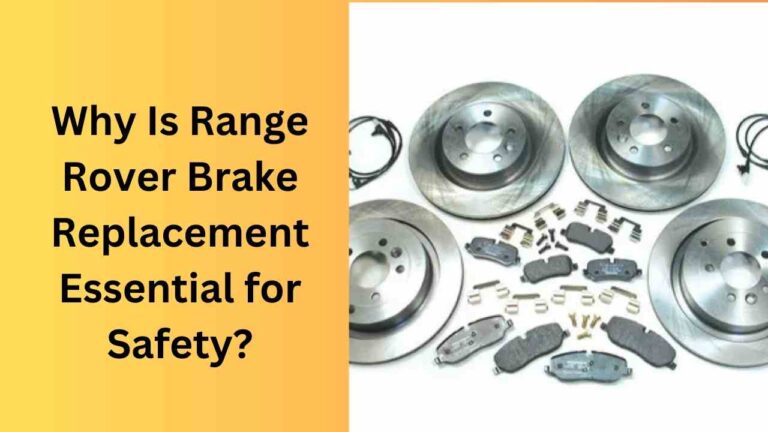The UAE is at the forefront of technological innovation, with the healthcare sector adopting cutting-edge techniques such as Augmented Reality (AR) and Virtual Reality (VR). These technologies are altering established processes, boosting patient care, and establishing new benchmarks for efficiency and accuracy.
Understanding AR and VR
Augmented Reality (AR) incorporates digital aspects into the real world, improving the user’s experience of their surroundings through interactive visual features. For example, during surgery, AR overlays digital guidance over the surgeon’s perspective, assisting them in navigating intricate operations. Virtual Reality (VR), on the other hand, immerses users in a completely digital environment, allowing them to interact with and participate in realistic simulations. These technologies are transforming healthcare delivery by enhancing accuracy, training, and overall patient care. Collaborating with a custom mobile app development company in UAE can help integrate these advanced technologies into healthcare apps, further revolutionizing patient care and medical practices.
Why AR and VR Matter in Healthcare:
In the UAE, a country noted for rapid technical breakthroughs, AR and VR are critical tools for improving healthcare services. They are transforming the way medical personnel train, diagnose, and treat patients, increasing operational efficiency and patient happiness.
Revolutionizing Medical Training
AR and VR are transforming the landscape of medical education in the UAE. These technologies enable medical students and experienced professionals to practice and improve their abilities in a safe, controlled setting.
- Simulation of Real-World Scenarios:
Medical personnel can use VR to experience very immersive, lifelike simulations of surgery, crises, and patient care. These simulations provide a risk-free environment for users to hone their skills, making it easier to handle critical circumstances in real-world scenarios. This procedure also lowers the need for cadaver-based instruction, providing a more ethical and cost-effective approach to medical education. - Enhanced Anatomy Studies:
Medical students can use augmented reality to examine the human body in 3D, investigating each organ, muscle, and bone in depth. AR enhances and simplifies anatomy lectures by superimposing 3D pictures on real-world items. This hands-on approach not only enhances recall, but also allows students to visualize complex systems, making the learning experience more dynamic and engaging.
This novel technique ensures that medical personnel in the UAE are fully prepared to handle any circumstance with confidence and precision.
Improving Surgical Precision
The use of AR and VR in surgeries improves the accuracy of medical treatments, resulting in improved outcomes for patients. Surgeons in the UAE are using these technologies to lessen the dangers and difficulties of surgery.
- AR-Assisted Surgery:
AR provides real-time guidance during surgeries by projecting essential data, such as blood vessel or tumor locations, right onto the surgeon’s screen. This allows for more precise incision placement and reduces the possibility of human error. AR makes even the most complex surgeries more manageable, and the risk of complications is reduced, resulting in speedier recovery times and more patient satisfaction. - Pre-Surgical Planning:
VR allows doctors to plan procedures by immersing them in digital simulations of their patients’ anatomy. This allows them to practice the treatment virtually before performing it on a live patient, resulting in fewer mistakes during the actual surgery. VR also enables for an accurate assessment of surgical risks, allowing surgeons to make better judgements and increase overall operation success rates.
These modern instruments have become important for healthcare providers seeking to provide the best possible care while minimizing surgical risks.
Better Patient Diagnosis and Monitoring
Accurate diagnosis is important for efficient treatment, and AR and VR are significantly improving diagnostic skills in the UAE’s healthcare industry.
- Improved Imaging:
AR takes conventional imaging procedures like CT scans and MRIs to the next level. Doctors can acquire a better grasp of a patient’s health by superimposing 3D photos right onto their body during a session. This increases diagnostic accuracy, allowing for more precise treatment approaches. Whether detecting early indications of cancer or spotting concealed fractures, AR can provide real-time visualizations that improve diagnostic accuracy. - Remote Monitoring:
VR allows healthcare workers to remotely monitor and communicate with patients in real time. In cases where patients are unable to visit a healthcare center, virtual reality allows doctors to conduct virtual consultations and monitor symptoms from a distance. This is especially useful for patients in remote areas of the UAE or those who have mobility issues. Furthermore, AR can let patients do self-checks and provide real-time feedback, minimizing the need for frequent hospital visits.
The use of AR and VR in diagnostics improves not only assessment accuracy but also regional healthcare access.
Transforming Rehabilitation Therapy
AR and VR are also having a significant impact in the field of rehabilitation. By presenting interesting and engaging virtual settings, these technologies inspire patients to stick to their therapy regimens and heal faster.
- Physical Therapy:
AR generates customized exercises to help patients through their rehabilitation process. For example, patients recovering from strokes or orthopedic surgery can use AR-based programs that provide real-time feedback on their progress, ensuring that they are doing movements correctly. These interactive methods make therapy more entertaining and less repetitive, resulting in shorter recovery times and better outcomes. - Cognitive Therapy:
VR provides immersive therapeutic environments for people healing from brain injuries or struggling with mental health issues such as PTSD. VR can imitate real-world scenarios, allowing patients to practice cognitive skills in a controlled environment. VR’s versatility makes it an invaluable tool in cognitive treatment, whether it’s helping a patient restore memory or desensitizing them to anxiety-inducing stimuli.
Physical and cognitive rehabilitation are becoming more personalized, dynamic, and successful, providing patients with the tools they need to recover faster.
Pain Management with VR
Chronic pain management is a challenging aspect of healthcare, but VR is proving to be an effective solution for reducing pain perception.
- Immersive Distraction Techniques:
Patients suffering from chronic pain or post-surgical discomfort can use VR to immerse themselves in tranquil and engaging virtual environments, such as walking through a forest or relaxing on a beach. This immersive distraction approach directs the patient’s attention away from their pain, increasing relaxation and alleviating discomfort. - Alternative to Medications:
VR minimizes the need for opioids, which can lead to addiction or other negative consequences, by providing a non-pharmaceutical alternative. This is especially crucial in the treatment of chronic pain, as long-term pharmaceutical use can lead to dependence. VR is a safe, cost-effective, and non-invasive therapy alternative that allows patients to better manage their pain.
Enhancing Telemedicine
Telemedicine has become an important part of modern healthcare, and AR and VR are making virtual consultations more effective and efficient for patients in the UAE.
- Virtual Consultations:
AR and VR technologies enable doctors to conduct immersive consultations in which they can see and interact with patients in real time. VR, for example, creates a virtual environment in which doctors and patients can interact in a more realistic manner. This makes telemedicine not only convenient, but also useful for routine check-ups and difficult cases. - AR-Assisted Diagnostics:
AR tools are transforming remote diagnostics by enabling doctors to access and analyze data in real time during consultations. For example, an AR tool may let a clinician examine a patient’s rash in greater depth or lead the patient through an at-home diagnostic test. This ensures that healthcare providers can provide precise and rapid diagnosis regardless of location.
With these advancements, telemedicine in the UAE is becoming more immersive and effective, extending quality care to patients across the country.
Personalized Treatment Plans
One of the most exciting advances in healthcare is the shift to personalized treatment, which AR and VR are helping to make a reality.
- Customized Physical Therapy:
Physical therapy can be personalized using AR and VR technologies. For example, a VR software may adjust to a patient’s development by presenting progressively demanding problems as they recuperate. This dynamic approach guarantees that patients get the best treatment available. - Predictive Care:
Doctors can foresee and prevent probable issues by analyzing real-time health data via augmented reality interfaces. AR, for example, might highlight regions of concern in a patient’s body, allowing clinicians to detect conditions in their early stages. This predictive care model not only helps to prevent emergencies, but it also provides a higher level of care and a more personalized approach to treatment.
These technologies are making healthcare in the UAE more individual-focused, resulting in better outcomes and patient satisfaction.
Public Awareness and Health Education
AR and VR are not just improving patient care—they’re also enhancing health education for the general public.
- Interactive Campaigns:
In the UAE, augmented reality-based health initiatives are educating the public about heart disease, diabetes, and mental health. People can use smartphones or AR glasses to access interactive lessons, view instructional movies, or take health quizzes that teach them about illness prevention and good living. - VR Education Modules:
VR allows users to simulate numerous health scenarios, gaining a better grasp of medical disorders and treatments. For example, a virtual reality experience may depict what it’s like to live with diabetes, helping individuals appreciate the necessity of good control. This interactive learning experience is both interesting and educational, encouraging people to make better decisions.
These interactive tools help raise awareness and encourage healthier living, contributing to better public health in the UAE.
Integration with UAE’s Healthcare Vision
The UAE government has made major expenditures in technology to improve its healthcare system. AR and VR are ideally aligned with the nation’s dedication to innovation and quality.
- Government Initiatives:
UAE Vision 2030 lays out a clear approach for enhancing healthcare through the use of innovative technology. AR and VR are critical components of this approach, accelerating digital transformation in the healthcare sector. By implementing these technologies, UAE healthcare providers would be better able to provide world-class services to their population. - Collaboration with International Experts:
The UAE is also working with foreign companies and professionals to offer the most recent AR and VR technology to its healthcare system. This global relationship assures that the country remains at the forefront of medical technology, providing patients with the finest possible care.
As part of its strategic aims, the UAE is presenting itself as a global leader in healthcare innovation, with AR and VR playing critical roles in accomplishing these goals.
Conclusion
The incorporation of AR and VR technology into the UAE’s healthcare system is changing the way care is given, improving everything from training and diagnostics to treatment and patient involvement. As the UAE continues to adopt new technologies, the future of healthcare appears brighter, more efficient, and increasingly personalized. These breakthroughs not only improve patient outcomes, but also propel the UAE to the forefront of medical innovation in the worldwide environment.









